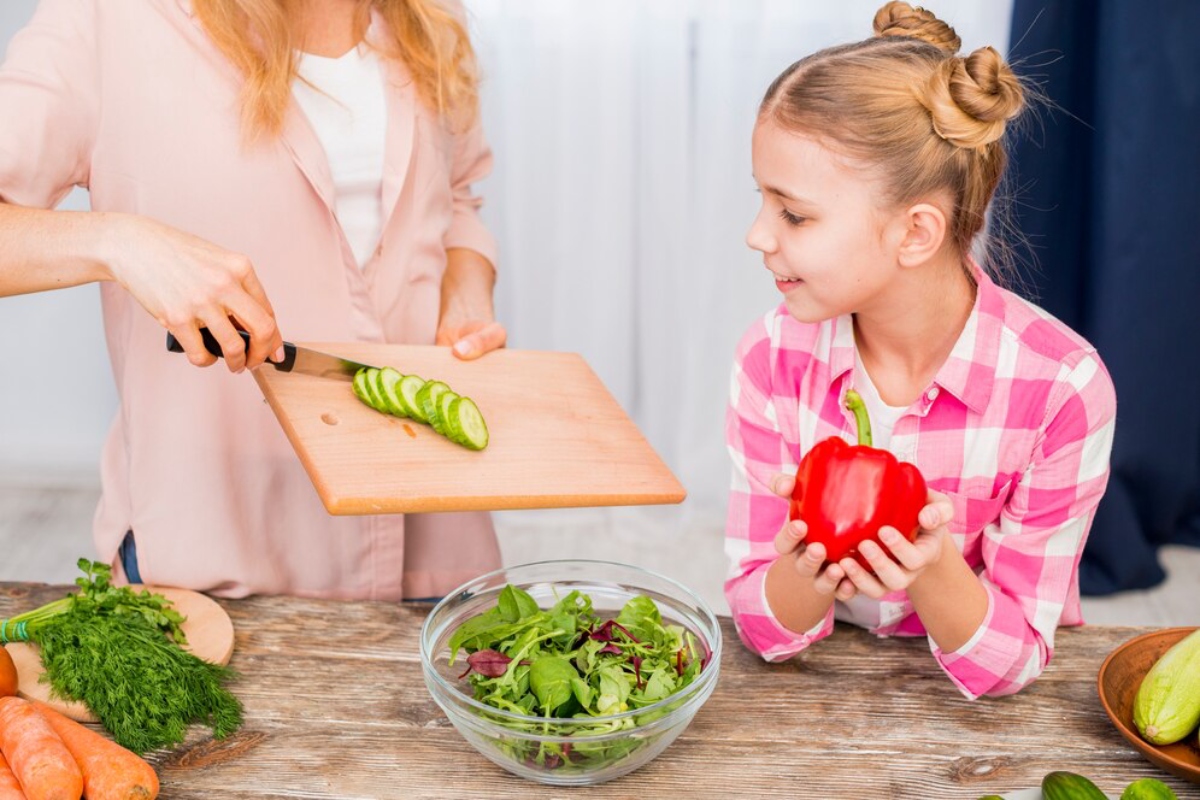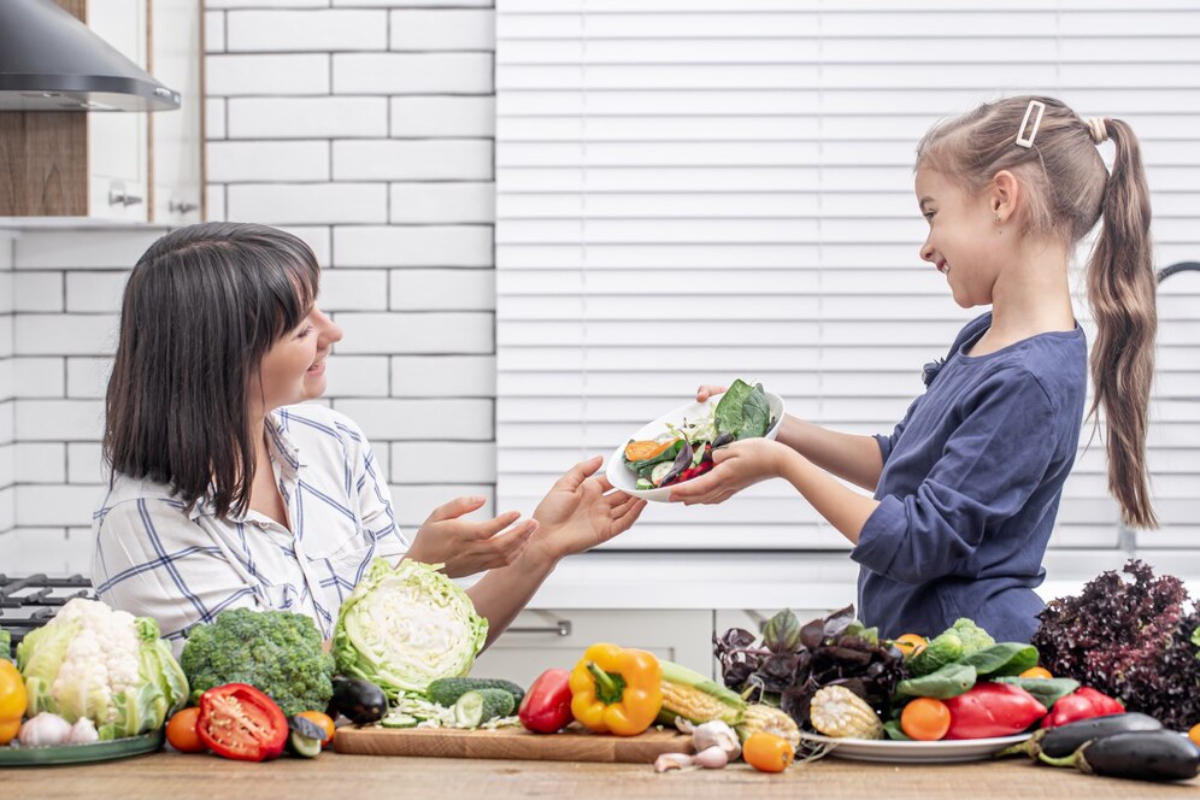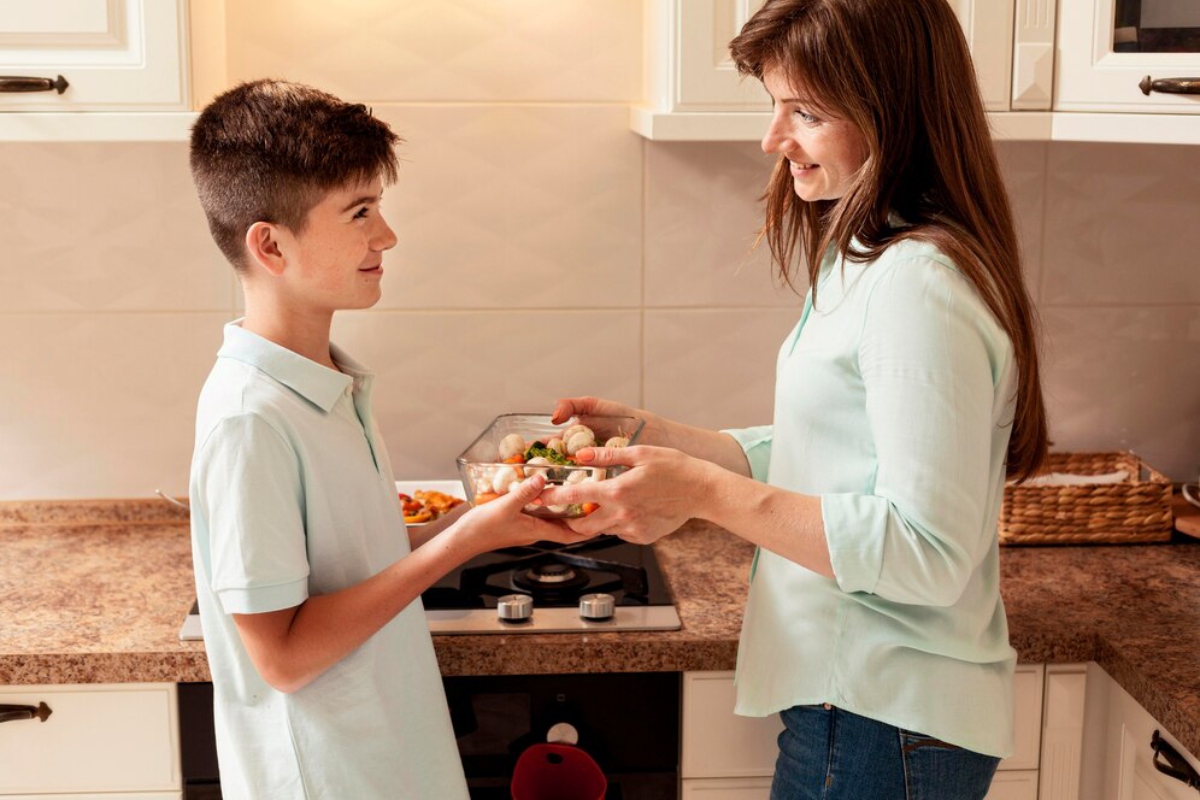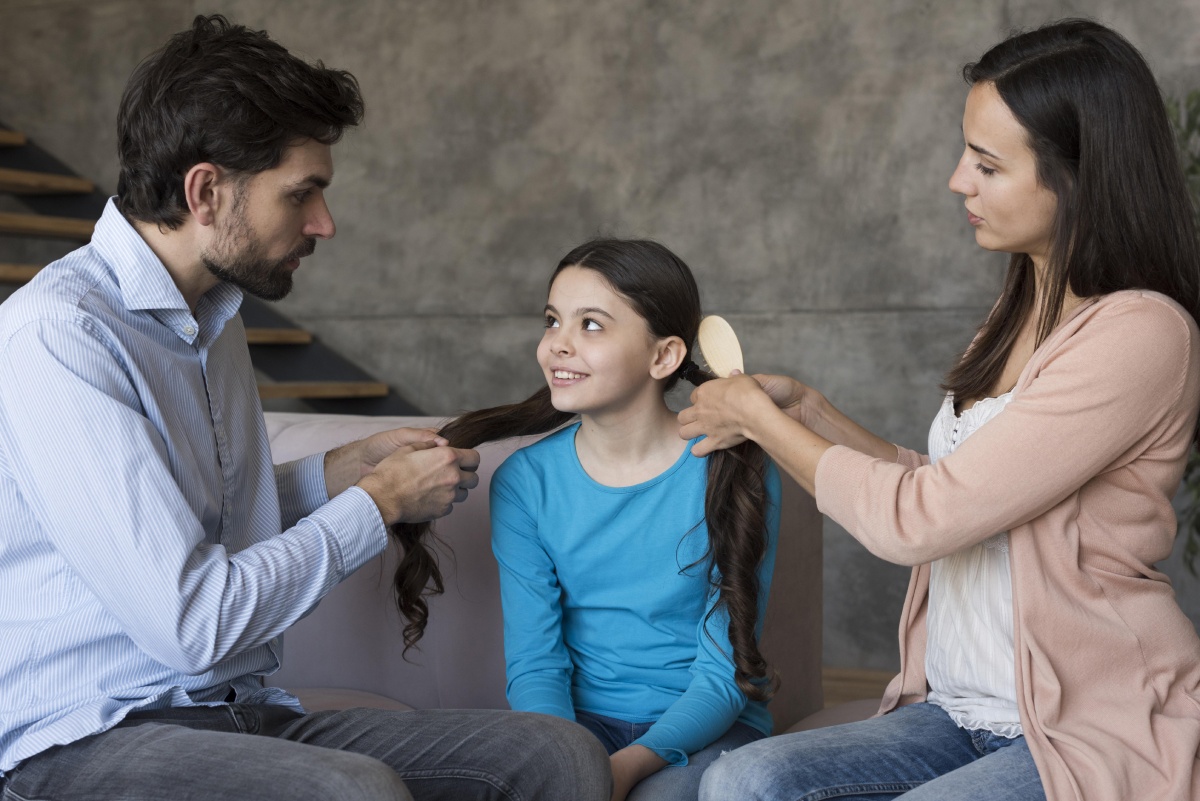
Best Nutrition Tips for Kids Going Through Puberty
Growing Bodies Need Growing Nutrition
Puberty is a time of dramatic change. Between the emotional ups and downs and the rapid physical development, your child is going through a lot — and all of it demands energy, nutrients, and care. One moment they’re scarfing down second helpings; the next, they’re suddenly moody, tired, or unsure about their changing appetite. It can be confusing for everyone involved.
This is where nutrition comes in — not as another pressure point, but as a powerful, supportive tool. The right foods help kids through growth spurts, hormonal shifts, and mood fluctuations. A balanced diet during puberty lays the foundation for lifelong health, strength, and body confidence.
In this blog, you’ll discover practical puberty nutrition tips tailored to teens and tweens. Whether your child is navigating new body changes, dealing with acne, or constantly raiding the fridge, you’ll find science-backed, stress-free strategies to support them every step of the way.
Let’s explore how healthy eating during puberty can become a positive, empowering part of growing up.
Why Nutrition Matters During Puberty
The Role of Nutrition in Growth and Hormone Regulation
Puberty triggers a huge increase in hormones such as oestrogen, testosterone, and growth hormone.
- Height and weight changes
- Muscle and bone development
- Menstruation and reproductive health
- Skin health and energy levels
To support these changes, the body needs a steady supply of nutrients, not just calories, but quality fuel.
Common Nutrition Challenges at This Age
Puberty can be accompanied by:
- Increased hunger or unpredictable appetite
- Preference for ultra-processed “convenience” foods
- Body image issues influencing eating behaviour
- Busy school and activity schedules affecting meal timing
Rather than focusing on strict rules, aim for balanced, flexible habits that help your child feel energised and confident.
Puberty Nutrition Tips Every Parent Should Know

1. Focus on a Balanced Plate — Not Perfection
The best eating habit to teach is balance, not restriction.
A balanced plate typically includes:
- Protein: For muscle growth and cell repair (e.g. eggs, chicken, beans, tofu)
- Carbohydrates: For energy (e.g. whole grains, potatoes, fruit)
- Healthy fats: For hormone production and brain health (e.g. avocado, nuts, olive oil)
- Fibre and veg: For digestion and long-lasting fullness
Encourage this balance at most meals, but let go of perfection. It’s okay to have burgers and chips sometimes — what matters is the overall pattern.
2. Don’t Fear Carbs — Fuel Their Growth
Carbohydrates are essential, especially during rapid growth. Teens often need more energy than adults, and carbs are the body’s preferred fuel source.
Good carb sources include:
- Wholemeal bread and pasta
- Brown rice and oats
- Fruit (especially bananas, berries, apples)
- Sweet potatoes
Avoid labelling carbs as “bad” — this only fuels confusion and food guilt. Instead, explain how carbs give them the energy to focus at school, play sports, and grow tall.
3. Keep Protein in Every Meal and Snack
Protein is vital for building and maintaining muscles, especially for active teens and those going through growth spurts. It also keeps blood sugar levels stable, which can help with mood and focus.
Add protein to:
- Breakfasts (e.g. eggs, yoghurt, nut butter)
- Packed lunches (e.g. cheese, chicken wraps, hummus)
- After-school snacks (e.g. boiled eggs, trail mix)
Aim for 10–30g of protein per main meal, depending on their age and size.
4. Prioritise Iron — Especially for Girls
As menstruation begins, iron needs increase significantly. Iron deficiency can cause fatigue, brain fog, and reduced immunity.
Great sources of iron include:
- Red meat and poultry
- Beans and lentils
- Spinach and kale
- Fortified cereals
Pair iron-rich foods with vitamin C (like orange juice, strawberries, or bell peppers) to help absorption.
If you’re raising a vegetarian or vegan teen, speak with a GP or dietitian to explore iron supplementation if needed.
5. Keep Calcium and Vitamin D on the Radar
Puberty is when bone mass builds rapidly, laying the groundwork for long-term bone health. Without enough calcium and vitamin D, bone growth can suffer, increasing the future risk of fractures or osteoporosis.
Encourage:
- Milk, cheese, yoghurt, or fortified plant-based alternatives
- Leafy greens and tinned fish with bones (like salmon or sardines)
- Vitamin D drops or supplements during darker UK months (October–April), as recommended by the NHS
Teens need around 700–1000mg of calcium per day, depending on age and sex.
6. Encourage Hydration — Not Just When They’re Thirsty
Dehydration can impact mood, concentration, and energy. Many teens simply forget to drink enough water, especially if they’re busy or self-conscious about using school toilets.
Tips to help:
- Pack a reusable water bottle for school
- Set a reminder or tie it to daily habits (like after brushing teeth)
- Add sliced fruit or herbs to water for flavour
Aim for 6–8 glasses per day, more if they’re very active.
Supporting Emotional Eating and Body Changes

Understanding Emotional Eating in Teens
Puberty can stir up new feelings — stress, anxiety, insecurity — and some children may turn to food for comfort or control. This isn’t about a lack of discipline, but a natural response to emotional intensity.
Support instead of shame by:
- Asking open questions: “Are you eating because you’re hungry, or because today was tough?”
- Offering alternatives: journaling, talking, and moving their body
- Keeping meals predictable and family-based to reduce grazing or secret snacking
Addressing Body Image with Food Neutrality
As their body changes, your child may become more aware of their shape and weight. Unfortunately, social media and peer culture often reinforce unrealistic body ideals.
Avoid:
- Comments about size or weight (even compliments)
- Labelling foods as “good” or “bad”
- Restrictive rules (e.g. “no sweets after dinner”)
Instead, model body acceptance and food neutrality.
- “Your body is smart and knows what it needs.”
- “All foods fit — we eat for energy, comfort, and enjoyment.”
- “It’s normal to grow and change. Everyone’s path is different.”
Puberty Nutrition by Scenario: Everyday Strategies
Busy Mornings? Keep Breakfast Simple
- Overnight oats with banana and nuts
- Wholegrain toast with peanut butter
- Smoothies with milk, berries, oats and protein powder
- Greek yoghurt with granola and fruit
Even a small breakfast is better than skipping. If needed, send something portable for mid-morning.
After-School Hunger? Prep Smart Snacks
- Cheese cubes and grapes
- Wholemeal pitta with hummus
- Homemade trail mix
- Boiled eggs and cherry tomatoes
Keep a snack drawer or shelf stocked with nutritious options that they can grab easily.
Fussy Eaters? Take the Pressure Off
Instead of battling over every bite:
- Offer variety over time, not in one meal
- Involve your child in meal planning or prep
- Present new foods alongside familiar favourites
Make food exploration fun, not forced.
Active or Athletic Teens? Fuel Their Performance
If your child is involved in regular sport, they’ll need extra energy and recovery support.
Focus on:
- Pre-exercise carbs (toast, fruit, cereal)
- Post-exercise protein + carbs (yoghurt and granola, chicken sandwich, smoothie)
- Regular meals throughout the day — not just evening top-ups
Help them see food as fuel, not a reward or punishment.
When to Get Professional Help
In some cases, nutritional struggles may signal deeper issues. Reach out to a GP or registered dietitian if you notice.
- Dramatic weight changes
- Food restriction or obsession with “clean” eating
- Skipping meals or excessive guilt after eating
- Refusal to eat with others
- Symptoms of iron deficiency (fatigue, paleness, irritability)
The sooner the support, the better the outcome — both physically and emotionally.
Conclusion: Nourishing Your Child from the Inside Out

Puberty is one of the most significant periods of physical and emotional development, and good nutrition is at the heart of it. From fuelling growth spurts to stabilising moods and supporting confidence, what your child eats truly makes a difference.
But this stage isn’t about perfect meal plans or pushing kale on your teen. It’s about connection, flexibility, and giving them the tools to understand and respect their changing body.
By focusing on variety, empowerment, and support over rules or restrictions, you help create a lifelong healthy relationship with food — one that fuels not just growth, but resilience.
Ready to put these tips for appetite changes into action? Start by making one small shift today — whether it’s packing a better breakfast, starting a chat about food feelings, or refreshing your fridge with tween-friendly snacks.
Got a favourite puberty-friendly meal or snack idea? Share it in the comments and help other parents build their own growing body menus.


